#new diorama theatre
Explore tagged Tumblr posts
Text
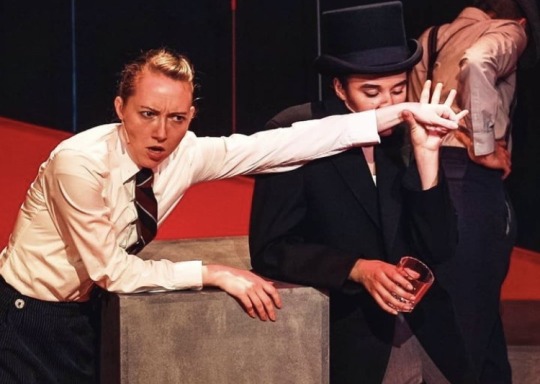
Does anyone have any context to this operation mincemeat photo? Because it is my favourite thing ever and I am dying to know what part of the show this was, I’m pretty sure it’s from the New Diorama production
#it is literally my favourite image ever#tashs face is just perfect#I need to know what was happening#because I cannot place this anywhere in the fortune production#this image is just the best thing ever though#I just#operation mincemeat musical#operation mincemeat#omm#OM#natasha hodgson#ewen montagu#new diorama theatre
39 notes
·
View notes
Text
l'aventure de canmom à annecy - épisode deux: XR
so I'm going to abandon all semblance of chronological order at this point.
just like last year there was an VR room operating on a morning booking system - each thing had two headsets and a signup sheet. I didn't get to try every one but I did get most of them. enough that the volunteers noticed me coming back every day x3

^ some random people immersed in the Wired
this is easily the longest annecy post so far... so please read on for a big old discussion of the unique difficulties faced by VR film as a medium, and how this year's annecy films meet them... or more often don't.
so annecy's vr films section is for essentially linear vr projects (i refuse to write "experiences") that can be watched/played in less than an hour. i don't know if that's a hard rule but that's how long all the ones here were!
let's get the technical stuff out of the way: the Quest 2/3 was by far the headset of choice. some ran natively, some were PCVR with a wire connecting to a computer, and some were 360° videos which played back on the headset with 3dof tracking. some had a degree of interactivity, up to about a 'walking simulator' level. the average runtime was between 20m and an hour.
the preamble: on the limitations of VR
the big question I have with XR movies is basically... how well does it actually use the medium? like, is it doing anything that wouldn't work better as a flatscreen game or a film?
this might seem like a high bar to clear, like why shouldn't it be in VR - but VR is uncomfortable, the headset is expensive etc etc, and that's before even the formal stuff I'm about to get into. so that's 'why not'. and also, this is a new medium, I want to see what unique features it has to offer!
I'm sure I've said this before, but despite on the face of it being more 'inmersive' than traditional flatscreen games or films, VR is actually a pretty restrictive medium! compared to flatscreen games with their many 'buttons', you are very limited in the possible interactions. your main interaction is to 'pick up' and 'hold' objects, but this is close enough to actual physical interaction to highlight how much it isn't. what it actually means is that you position your hand or controller in a trigger and press a grab button or pinch your fingers, at which point the object snaps to your hand and moves weightlessly with it.
you also can't accelerate the pov too much without causing motion sickness, etc etc.
ok, what about film? well, compared to film, the big big thing VR lacks is the frame of the camera. you can't cut, you can't frame a subject, you don't have long shots or closeups, you can't even rely on the player/viewer looking in the direction of an interesting thing.
since movement is also tricky in VR due to the motion sickness problem, you're also limited in your ability to steer the viewer to interesting sights with Valve-style 'vistas' using the level architecture. it's not impossible - Valve themselves have their familiar vistas in HL Alyx - but it's something that depends on the player being able to move through a large space, so it doesn't fit these kinds of movie-like project so well. otherwise you can draw attention to a direction using various means, like visual effects that converge on a spot, or just keeping most of the action in the same area.
what you can also do, closer to camerawork, is move the viewer's point of view, and shrink or enlarge their surroundings. the language of VR 'shots' is still far from defined, but we have a few recurring ones: standing in a normal sized room, the giant's view in a tiny city, the floating perspective looking down on a diorama, the ant's eye view inside something regular sized.
how about theatre, which also has most of these limitations? well, compared to being in person with a real human being, you're limited by the capabilities of realtime animation systems and the rendering tech available on the device. you're looking at the character in a slightly fuzzy low resolution and unless you have AAA money which noone in VR does, you're a bit limited in the 'acting' you can pull off. this may change if the apple vision pro gets popular - apple already have a 'gertie the dinosaur' style demo where a very detailed dinosaur emerges from a portal - but it's definitely out of reach of most teams working on the Quest.
so compared to all these other media, what does XR offer?
compared to film and theatre, there is the game aspect of agency: a story feels different if you are the one doing it. so most VR narrative games have characters interact with the player somehow, though this introduces the problem of how to write the player into a story without feeling like you're railroading them or that they're superfluous to the real story.
it's very easy to undercut this sense of agency by having an amount that's not zero but still too small, e.g. if it just feels like the player is touching a button that lights up then you wonder why they even bothered.
the role that most games put the (vaguely defined) player character in is 'terrifying violence doer'. this is a fairly easy role to write around, and it gives the player a lot of control of the 'how' while letting the writer control the 'what' and 'where' and 'why'. similarly if the player's role is something like 'puzzle solver'. but for a purely narrative presentation, these roles don't exist.
still, this is the idea that a lot of VR rests on: an 'immersive experience' which puts the player into the story.
the other big thing that VR has is the joy of experiencing visual effects in 3D. particles, trails, transforming geometric shapes etc are cool on a flat screen and even cooler in stereo vision where you can move your head around. another benefit is spatial audio by default - something that is gradually coming to games but provided 'for free' by vr consoles.
in the land of games, you also have incredibly precise position and direction input... as long as it's in arm's length of the player. the most successful genres of VR games (so far) use this: a lot of shooting games, and some games that let you interact with physics objects, offer 3D jigsaw puzzles, or simulate sports to provide some real exercise. it can be really good for rhythm games as beat saber demonstrates.
VR is also really for social games like VRChat - similar to MMOs but with the benefits of more complex tracking in lieu of canned animations.
but... none of these fit the form of a predictable 15-50 minute narrative sequence! they're not films! so the VR films category at annecy is a tough problem to crack.
last year, the VR project that most impressed me was one that put you in the seat of a novice spotter in a bomber in the second world war. this was a great fit for a lot of reasons. you are in a vehicle so you have no reason to move from seated; the scenario is full of loud scary sounds that can make full use of spatial audio; your 'character' is well-defined but also doesn't have much reason to speak within the scenario. this had a small amount of interaction (by pointing your head) which you could actually fail, making it a bit closer to a game, and also giving you reason to play close attention to the bombed out cityscape below you. it did a fantastic job of capturing the tension of a dangerous air mission, the pilot character interacting with you was compelling, and overall it really benefited from being in VR.
this year's films
sadly nothing I saw this year comes close to that. but still, some are interesting, so let's go through them!

My favourite this year was probably Flow - completely unrelated to the movie in the main competition, though they share the trait of being completely wordless, conveying their story simply through imagery and music.
Flow's big trick is a very cool visual effect where characters and objects are conveyed the trails left behind by little particles, causing them to appear ghostlike . At first you're just flying through a cityscape, passing various people on the street and in the subway, with the particle trails conveying the breaths of the passengers; gradually a storm brews, the trails becoming the wind that tears at everything.

I believe this was a prerendered film, with only 3dof tracking - i think i saw some compression artefacts at some point. So it's less technically impressive than if they managed to do it realtime but it does make full use of the power this gives to render loads of particles and move rapidly through different scenes. it was also an effect that benefitted from the ability to put you in the middle of it - something that would not work as well on a flat screen.
But it also benefitted a lot from being more film-like. It has an original soundtrack, and progresses without input from the player. There's no awkward 'player' character to write around, no space you stand about in. The film can simply unfold and let you appreciate it. In this case, no interaction is better than bad interaction.
My Inner Ear Quartet from Japan did not do anything particularly novel with the medium, but to my mind it had by far the most compelling story. It tells of a young, introverted boy who habitually digs in the dirt for objects that other people would consider trash. The title refers to a string quartet which he hears when he cries, imagined to be in his inner ear; also there is a pair of tiny shrimp which he saw grow in a net.
The first half is narrated by a man who turns out to be the boy grown up, now a hearing aid salesman. While the boy abandons his box of treasures, as an adult he returns to collecting and documenting abandoned objects as a kind of urban explorer.
The geometry here is stylised in a kind of rough, children's drawing way. I think this could have been pushed further with more complex shaders but it works. For the most part, you're watching as an invisible observer seated on a floating chair. At certain points, the viewpoint is taken inside the boy's ear, or into the tin of treasures, where you can grab the objects and get the boy's brief, poetic description of each one.
I liked this story because it had substance, but left enough up to interpretation to be engaging. By showing the treasures to us with the descriptions we get to understand why they might be significant to the boy. It plays well with the classic anime theme of objects as vessels for emotional significance. I think it would have worked just as well on a flat screen, but I enjoyed my time with it.
Now the rest...

The Age of the Monster had some things going for it, but honestly I think this one shouldn't have been in VR. It's basically a film about how bad we're fucking up the planet, putting us in the house of a man who works in the nuclear industry in the 70s up to a future where the cooling towers lie in ruins. The 'monster' is a giant anthro catfish, seen first as a B-movie monster and dream vision and finally as a real kaiju scale creature in the final future scene.
We're told about the economic circumstances that led to the man getting this job, and his relief at working in nuclear during the oil crisis; we're told about the infamous repressed oil industry report about how climate change is gonna be a thing; we're told about the man's fraught relationship with his radical daughter who is furious about his extractivist ways. Then we get a collapse and humans learn to take the force of nature more seriously, i forget the exact phrasing they used.
The main problem is? These are mostly things you are told, by voiceover. There is some environmental storytelling in the evolution of the house but not enough to convey much without the v/o. the film does not seem to have the confidence in its imagery to show us what it's trying to say.
I feel like the film's vision of the post-collapse future, with flocks of birds flying over a wide river and collapsed overgrown cooling towers, is a huge missed opportunity. Here's an opportunity to apply some true visual imagination of how humans might live in a climate changed future... but nah, giant catfish kaiju just kinda hanging out there.
t
The environmental message is generally a stance I sympathise with, but the film doesn't make a good case for it on a propaganda level. We see the cooling towers outside the window and eventually the house, flooded, but it does little to make the collapse narrative emotionally compelling - and I question a little the choice to make it nuclear focused in a film about climate change. It's probably based on an actual guy, right? Maybe someone's parent? But... despite putting us in his shoes i don't really feel like i understand him very well.
Does this seem harsh? I know full well how involved vr dev is, and even simple things can take weeks. But i also want someone to make the most of this medium. To make something as compelling as the best short films on the main screens.

Gargoyle Doyle tells another 'skipping though time' story, depicting a gargoyle on an 800 year old church from its construction through to demolition. I would compare this one perhaps to a puppet theatre - it certainly stands out in terms of character animation, with Doyle played by Jason Isaacs as a classic grumpy old British theatre guy, his foyle foil a goofy statue of monk acting as a drainpipe with a penchant for puns.
I didn't get to watch this one in full, since I got to sub in for someone who left early (thanks to the volunteer who took pity on me when it was fully booked lol). So I didn't see the full arc of this. What I saw was... definitely edutainment material, but pretty well done. The player is cast as a visitor to a future museum and nature reserve built on the site of the church. It seems like this was originally shown in a real museum in Venice, with the 'in the museum' sections portrayed in mixed reality; obvs this wouldn't work at Annecy so they have these virtual too.
The narrative as a whole seems a tad self congratulatory and pat, with Doyle learning a valuable lesson about not being a cunt to his only friends as he's resurrected in the museum, and it doesn't do a whole lot with the VR framing, but taking it as an educational puppet show, it works pretty well - the voice performances are good and the jokes, while a little predictable, work for the kid-friendly style it's going for. I'm not sure it really needed to be 40 minutes long, but I can see they wanted to go maximalist for a proof of concept like this. It is kinda limited by the rendering capabilities of the Quest, the lack of shadows in particular, and could definitely benefit from some baked lighting given the relatively static scenes, but I give it a lot of credit for the character animation and VA.
Apparently the jury liked this one too because it won the competition!

Nana Lou has been in development a few years apparently, casting the player in the role of a psychopomp spirit whose role is to ease the passing of a woman dying of a stroke. Visually, this is one of the best looking, with elaborate forest scenes and strong environment design.
What I really like about this one is its use, at times, of a diorama-like presentation where the player looks down on tiny characters in a room. This is a concept I've wanted to try in VR for a while, and it's cool to see someone do it.
I found the kind of spiritual aspect of the story a lot more underwhelming. The player is accompanied by two other spirits who explain everything that's going on and point out the significance of all the imagery. The player is informed they have an important role, but they don't have a name and can't talk back, and the only interaction is to grab floating photos to initiate flashbacks.
I wish this film had had the confidence to trust in its acting and visual storytelling. While Nana Lou's life is a bit too lacking in serious conflict to make the premise work, it would still be far more interesting and compelling with the frame story largely trimmed. You could still cast the player as a psychopomp but you don't need to have a greek chorus telling them what to click on!
The actual story concerns Lou's relationship with her daughter, who became estranged when she quit university to raise her child, instead of staying on as Lou thought she should. This caused them to spend decades estranged. Finding out this story frees up the daughter's spirit as well, and the penultimate scene has her speak to Lou and make up.
There's definitely something to work with there, but the main delivery mechanism is rather ponderous narration triggered by interacting with objects, with the dramatic scenes largely having taken place off screen. Like The Age of the Monster, it suffers a severe telling-not-showing problem.
It's a shame because there are nice touches here. When you are beside Lou's bed in the hospital, your touch leaves a glow effect which is very evocative. The acting is solid, though the script undermines it a bit.
I don't think narration is evil - evidently, Yuri and I used it in our film, it's a very efficient way to convey information - but I do think it requires a lot of thought put into style and rhythm.

Spots of Light... ok. This one tells the story of an Israeli soldier who lost his sight in the Lebanon war, and later regained it temporarily through surgery. Given my general feelings about the Israeli military (presently carrying out a genocide), I was definitely not disposed to like this one. Nevertheless, it was the only one free so I decided to give it a shot.
This is one of those films where you interview someone and then put an animation to it. So this guy tells you what it was like to be blind and then not blind to see his family briefly, and it's illustrated with various images. And (if i remember right) some parts are on tvs showing video (and if you're using vr to embed a flat screen what is even the point??). When he's blind, everything disappears except vague outlines suggested by small points of light.
Ultimately this is a film about blindness, not the war (of course, meaning this is a person who could leave the war behind - though not to make light of the cruelty of conscription). Making a film about the experience of blindness in a purely visual medium is a choice all right, and I don't feel like this film expressed anything unexpected about it - he was sad to lose his sight, glad to see his family, depressed to lose it again but ultimately at peace. Which is conveyed, of course, primarily by narration.
So yeah this one didn't do much for me!

Stay Alive My Son, now. Agh. This one was... this one was a mess.
So this one is about the Cambodian genocide, right. It's based on a memoir by a survivor of the genocide, Pin Yathay, who became separated from his wife and son while fleeing the Khmer Rouge.
The way this is presented is essentially a walking simulator that takes you through a dungeon-like environment full of skeletons. Every so often you encounter 3D films - filmed with some kind of depth camera - showing actors playing out scenes from the life of the family. There is also a frame story where you visit Pin Yathay in his modern day house, where he sees a digital reconstruction of how his son might look as an adult
This one is difficult to review because it was severely marred by technical issues with the spatial audio, which caused the sound to cut out when you turned your head the wrong way or moved it to the wrong place. It would probably be less of a rough experience if the audio worked as intended. Nevertheless, I have plenty of reservations with the way the story is told as well.
It seems the director of the VR experience (fine! I'll write experience, there isn't a better noun for this kind of thing that sits between game and film) met Pin Yathay, there's video of her speaking to him at the end, but he had pretty minimal creative input beyond providing inspiration through his memoir. So this is a Greek/US interpretation of the Cambodian genocide. The narrative it tells is basically: Yathay and his family are living a pretty idyllic life, then the Khmer Rouge happens, seemingly not for any particular reason. Yathay and his family are evacuated and then put to hard labour growing rice; eventually, their son is put to work too, so fearing for his life, they flee into the jungle.
The Cambodian genocide is - obviously! - one of the worst atrocities of the whole bloody 20th century, and the circumstances surrounding it are worth reading about (though pretty unremittingly bleak). But you won't learn much about, say, cold war geopolitical alignment, Prince Sihanouk, the absolutely horrific civil war, the different ideologies in play in the Marxist milieu that influenced Pol Pot, or the spillover from Vietnam and the massive bombing by the Americans here which helped put the Khmer Rouge in power. You definitely won't learn much about the Cambodia that existed before the war. Instead, you're mostly traversing a dungeon that could come from any horror game, shining your torch on the things you're told to in order to unlock another segment of narration from (the actor playing) Yathay. It is, in pretty literal terms, a tour of atrocities.
Unfortunately the '3D film of actors' conceit doesn't really work because... even audio issues aside, the acting is pretty unconvincing. For some reason - perhaps that subtitles are tricky in VR - the dialogue is in accented English rather than Cambodian, and it's pretty quickly evident that they just have one guy in the role of 'Khmer Rouge soldier' and the lines he's given are kinda awkward. The horror game aesthetics of the environments and the amateur actors and costumes all clash pretty badly. The 3D filming is also kind of jank, only really working if you're fairly close to the camera position, so you aren't really free to move too far even if the audio didn't crap out.
The basic feelings it's trying to explore - the horror of living through a genocide, separation from a child, guilt for abandoning him, not knowing if he's alive or dead - is definitely worth depicting, but honestly this would have been far far better expressed as a 10-20 minute film than a slow 55 minute VR walking sim. The more abstract bits toward the end with paper plane imagery and a Buddhist temple (where you have to put a block in a slot to unlock a door) also feel too jank and videogamey to really have much impact, though by that point I had been wrestling with the audio for nearly an hour so I wasn't in the most receptive mood.
But all the execution flaws aside, that leaves the question of what even is the right way to portray a genocide artistically? This approach is very abstract, reducing the events to dislocated symbols - propaganda posters, the tree against which children were dashed - which perhaps might reflect how fragmented memory becomes, but seems to be wasting the potential of VR to establish you in a place. But then, I guess rice fields are harder to render than enclosed dark rooms.
Speaking of rendering, this was PCVR, so your torch casts shadows and it has other features that would be hard on realtime. But the lack of ambient light and general harshness of the materials adds to the 'horror game' feel.
There is something here about how genocides become associated with certain images. For Cambodia, it is primarily phrases like 'killing fields' and the stacked skulls in the genocide memorials such as Choeung Ek - few people know the name of the memorial in the west, but I think everyone who's heard of the genocide has seen the big stack of skulls. I imagine this is what all the skeletons in this experience are supposed to call to mind: they're representatives of the many ways people died. The problem that this kind of environmental storytelling has long ago been made kind of camp by videogames. A photo of a stack of real skeletons still has power to disturb, but less so a low poly 3D skeleton.
Should it have tried for a realism? The idea of trying to realistically simulate the experience of living in Cambodia though the genocide is kind of ghoulish, and I'm glad they didn't take that approach. But the 'tour of images' approach falls flat. I think The Most Precious of Cargoes elsewhere in the festival makes a stronger case for how to approach a topic like a genocide in a consciously constructed way, but it also has the ability to be in dialogue with a lot of other films made about the Holocaust. There is less in English about the Cambodian genocide - the viewer can't even be assumed to know what happened.
Overall, I think it would be possible to make a much stronger film about the genocide in Cambodia. But I'm not sure what that film would look like. I did learn one thing from this story, which is that there is a reality show in Cambodia which shows survivors of the genocide being reunited with their families. Not much is made of this here, it's something of a background detail. What would it be like to grow up in the shadow of an event like that? I wish the film had been willing to portray more of modern Cambodia - and I hope at some point someone in Cambodia will have a film at this festival, in VR or not, which can talk about it all from the first person.
Is there a good way to try to answer the curiosity of people who live safely in rich countries about what it is like to go through an actual genocide... using a Meta Quest 2 VR headset that costs a few hundred quid? I don't really know, but this film could have done with being a bit more reflective, I feel. So it goes.
the others
there were three films I couldn't see - The Imaginary Friend, Oto's Planet and Emperor. If I get some other chance to try them I'll write about them too!
Overall I felt a bit disappointed with the VR this year, but also I kind of want to put my money where my mouth is and try my hand at making this kind of thing. I do have the technical knowledge at least!
If you read all this, thank you.
16 notes
·
View notes
Text

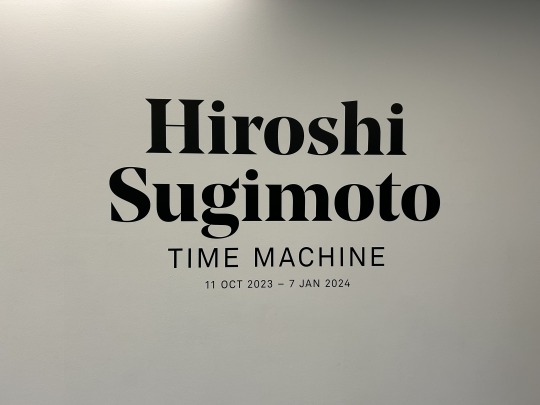

Today I went to the Hiroshi Sugimoto exhibition at the Hayward Gallery on the South Bank. This is his first retrospective in the UK. RM met him earlier this year and spoke to him for GQ Japan.


I really wasn't sure what to expect but what I found was striking, intriguing, and in some cases disturbing and eerie. He's an artist prepared to follow his inspiration wherever it takes him: dioramas at the American Museum of Natural History in New York, abandoned cinemas and theatres in the US and France, the wax works at Madame Tussauds, classical architecture, and experiments with light and electricity. A consistent theme for me was his trying to bring dead and inanimate things to life through photography.
Diorama Series (1976-1977) Using careful framing, long exposure times, and a large view camera for clarity of detail, Sugimoto heightens the illusionism of the dioramas themselves, creating exquisite effigies of a natural world on the verge disappearing.
Polar Bear (1976)
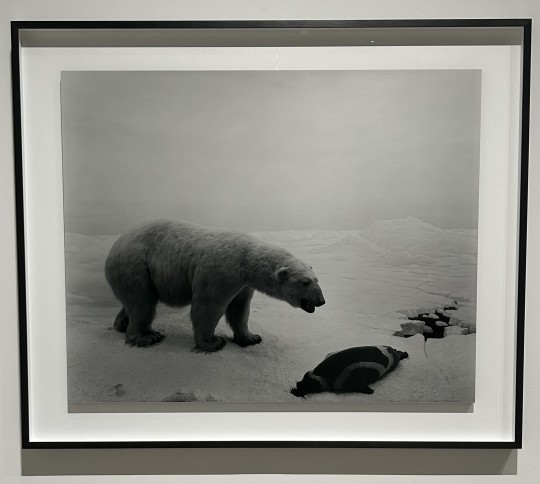
The Theaters Series are photos of abandoned theatres, their classic opulent architecture, now bereft of admiring human eyes, slowly disintegrating. The film on the screen, the only source of light adding to the overall spookiness of the image.
Palace Theater, Gary, 2015 "Snow White"
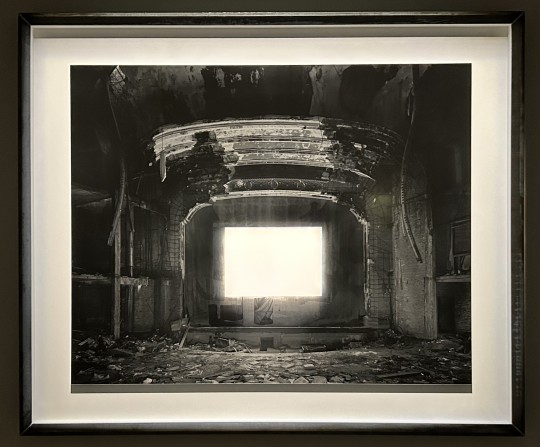
Everything reminds me of BTS at the moment. So I couldn't help but think of this set in Budapest while looking at these photographs.

Portraits Series (1999) A series of photos of famous people, wax figures from Madame Tussaud's and the museum of wax in the Itō, Japan taken out of their museum setting and photographed in a typical portrait style.
Henry the Eighth is the king of bling. He puts DJ Khaled to shame.
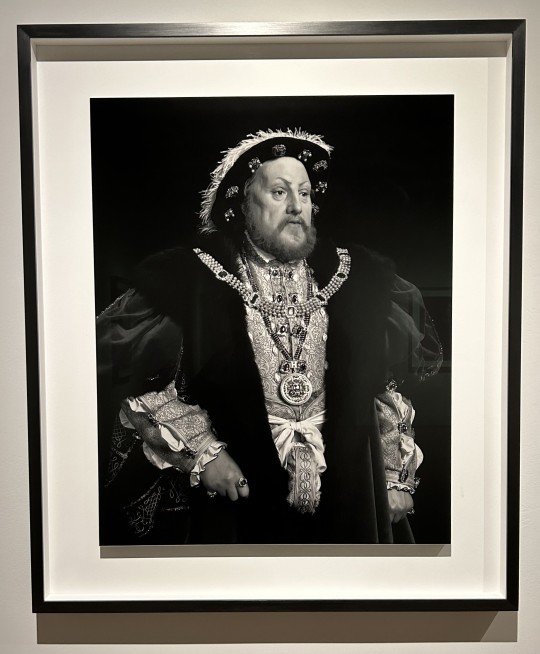

The Architecture Series (2000-2003) are blurred images of well-known examples of Modernist architecture like the Chrysler Building.
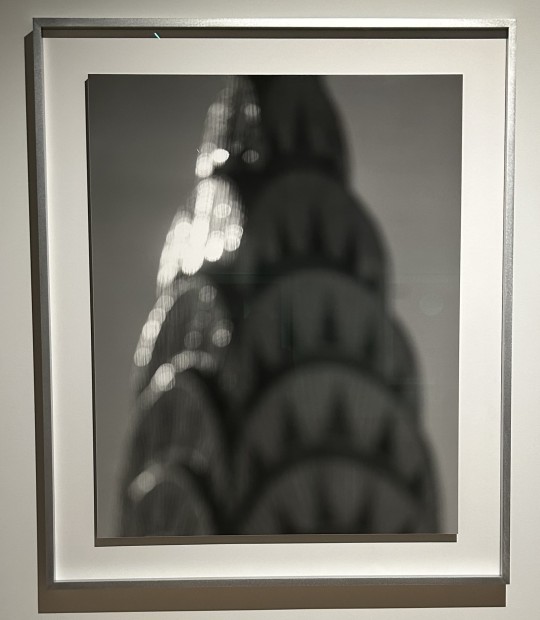
Lightning Fields (2016)- "The idea of observing the effects of electrical discharges on photographic dry plates reflects my desire to re-create the major discoveries of these scientific pioneers in the darkroom and verify them with my own eyes."
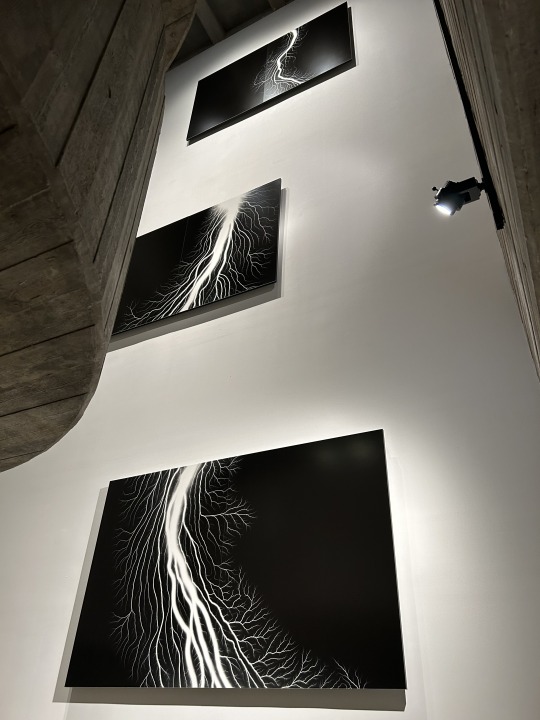
Optiks Series (2018) derived from Newton's prism experiment. Fine particles of color captured within the square frame of a Polaroid photograph.

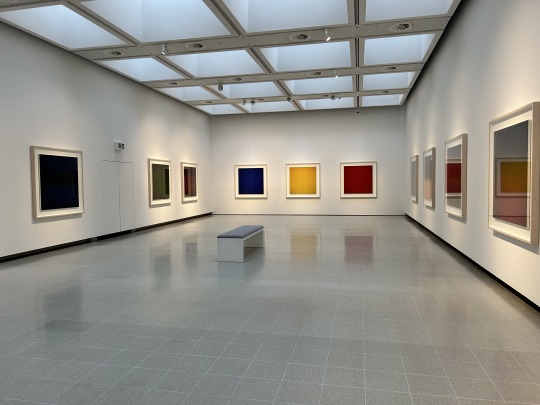
Post Date: 16/12/2023
11 notes
·
View notes
Text
God, Operation Mincemeat is Brilliant! - Jen S
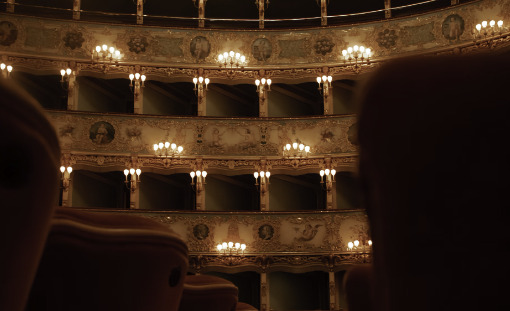
There’s a new show taking London’s West End by storm and what a show it is! Operation Mincemeat is a new musical by award-winning musical theatre makers, Natasha Hodgson, Zoë Roberts, David Cumming and Felix Hagan, collectively known as SpitLip. It follows the real story of a group working for British Intelligence who come up with an utterly wild strategy to trick Hitler and help win us World War ll. It’s fast-paced, silly and very, very funny – a perfect tone for such a farcical true story.
Having previously been performed at London’s New Diorama Theatre (2019) and Southwark Playhouse (2020, 2021, 2022), followed by an extended run at Riverside Studios (2022), this exciting new musical has made its way to the Fortune Theatre in the West End and is growing stronger every day. Opening on 29th March this year, the show has extended multiple times due to popular demand and is currently booking until 4th November.
Fans of the show are passionate, with some saying that they have seen the show 30+ times. This has led to Operation Mincemeat now offering a Loyalty scheme to show their appreciation for the support. If you have seen the show multiple times, you can head over to the Operation Mincemeat website and fill in a form to apply for £10 off per ticket for a group of 6 or more patrons (subject to availability.)
This is one of the things which makes me so happy for the creators of Operation Mincemeat – they care about their audience. When creating the show, as far back as 2018, they uploaded videos of what they were working on, to their SpitLip YouTube channel, asking for feedback on their working progress songs and sharing with their audience, challenges they were facing with the making of Operation Mincemeat. This is all content which isn’t usually shared, as creatives often like to keep things on the down-low until they are fully happy with their work. SpitLip, on the other hand, are collaborators and when watching Operation Mincemeat, I was struck by how much I felt that in the theatre.
I’ve tried to express what I mean to friends and family, but Operation Mincemeat just feels different. When watching it, I felt like I was as much a part of the show as I was watching the show. The atmosphere in the theatre was nothing but positive, with audience members around me spilling compliment after compliment about how original and creative the show is. With a cast of only five actors, something else which is special for this show is the fans’ support and enthusiasm for the understudies. Unfortunately, in theatre, there can be negativity towards understudies generally, when an audience member attends the show expecting to see a particular actor, but they see an understudy instead. Not at Operation Mincemeat. Fans are so supportive of every cast member that a bingo sheet has been created, so that fans who see the show multiple times can tick off the different combinations of cast members they have seen perform together.
I have seen the main original cast in the show (Natasha Hodgson, Zoë Roberts, David Cumming, Claire-Marie Hall and Jak Malone) twice (so far) and both times, something went awry. Of course, in live performance, things can go wrong at any time, but the important thing is how the actors react and I felt truly honoured to witness how they dealt with it.
At my first viewing, it was just a simple misthrow of a hat. Not a big deal – they just threw it again and moved on. My second viewing, however, saw something which I loved with all my heart – probably the greatest moment I’ve ever seen in a theatre. Three actors were on-stage (Natasha Hodgson, David Cumming and Claire-Marie Hall), their characters having a discussion, when suddenly, Hester (Jak Malone) swung the door wide open, loudly and confidently making their entrance. The three looked at Jak. Jak looked at the three. Natasha broke the silence, “you’ve come in a bit early, Hester, I think.” The audience were suddenly beside themselves, realising that Jak had mistakenly entered the scene too early and we all watched as he slowly backed away, closing the door behind him. The three continued where they left off, only to be greeted by Jak re-entering a few lines later from the wrong entrance. Natasha, “there isn’t even a door there.” It was utterly hilarious and I was nothing but impressed by how the actors dealt with the situation. This is a funny musical and that was a naturally funny moment, so why not use it? The audience’s laugh was nothing but supportive and only brought us closer to the piece. It was a rare genuine moment in theatre, where the actors were just playing and what a breath of fresh air it was.
Another breath of fresh air, was my experience meeting the cast. Typically, I don’t go to stage doors after shows any more, partly because I don’t want to take up their time when they’re tired and busy. On this day, however, I was meeting a friend after the show, who was running late and as I was standing close to the stage door, the cast started coming out. I figured that this would be a natural opportunity to tell the cast how much I loved their show and I cannot tell you how impressed I was by the experience. Despite having less than two hours between their matinee and evening shows, the cast took as much time as was needed to speak to everyone personally, signing programmes and chatting about the show. It was the most chilled, personal stage door experience I’ve ever had, with actors who were nothing but grateful that people wanted to share how much the show meant to them. They were a great group of people and I even had the extra joy of meeting Jak’s Italian Greyhound, Dracula.
Every time something good comes their way – an extended run or yet another 5-star review - it brings me such joy, knowing that a group of friends who made their own musical have seen it go from strength to strength. It’s so rare that happens and I am truly thrilled for them. I can only hope that it’s around for many years to come – I’ll be cheering them on all the way.
Treat yourself to Operation Mincemeat tickets and have a great day!
10 notes
·
View notes
Text
Nina Segal is a playwright. Her productions include:
THE ODYSSEY (IT'S A REALLY REALLY REALLY LONG JOURNEY) : Unicorn Theatre (2024)
SHOOTING HEDDA GABLER : Rose Theatre (2023)
WAR AND CULTURE : New Diorama (2023)
THE GOOD PERSON OF SZECHWAN : Sheffield Theatres and Lyric Hammersmith (2023)
O, ISLAND! : RSC (2022); Stadttheater Gießen (2024)
AI : Young Vic (2021)
ASSEMBLY : Donmar Warehouse (2021)
(THIS ISN’T) A TRUE STORY : Almeida Young Company (2019)
DISMANTLE THIS ROOM : Bush Theatre (2018); Royal Court (2019)
DANGER SIGNALS : New Ohio, NYC (2018)
BIG GUNS : Yard Theatre (2017); Theater Ingolstadt (2019); Theater Plauen Zwickau (2023)
IN THE NIGHT TIME (BEFORE THE SUN RISES) : Gate Theatre (2016); Teatro Belli, Rome (2017); Orange Tree Theatre (2018); Foro Bellescene, Mexico City (2019); Staatstheater, Mainz (2019); Know Theatre of Cincinnati (2020); Theater Bielefeld (2021); Schauspiel Frankfurt (2024)
Nina was the recipient of the 2022 Playwright's Scheme Award and was shortlisted for the 2020 George Devine Award. She won a Rose D'Or award for her short film CAPTURE, made with the Financial Times. She is under commission to the RSC, Soho Theatre, Dutch National Opera and Royal Opera House.
Contact Nina at [email protected].
Contact Nina’s agent Lily Williams at [email protected].
Photo: Christian Rubeck, Anna Andresen and Antonia Thomas / Shooting Hedda Gabler / Rose Theatre (2023). Credit: Andy Paradise.
2 notes
·
View notes
Photo

Louis-Jacques-Mandé Daguerre: Pioneer of Photography
Louis-Jacques-Mandé Daguerre was a French artist and photographer, born on November 18, 1787, in Cormeilles-en-Parisis, France. He is credited with the invention of the daguerreotype process, which revolutionized photography in the 19th century. In this article, we will explore the life and contributions of Louis-Jacques-Mandé Daguerre, as well as the impact of his work on the world of photography.
Early Life
Louis-Jacques-Mandé Daguerre began his career as a painter, specializing in theatre sets and dioramas. He was fascinated with the use of mirrors and lenses to create illusions of depth and movement, which would later inspire his work in photography. He collaborated with another inventor, Nicéphore Niépce, in the early 1820s to develop a new process for capturing images.
Daguerreotype Process
After Niépce's death, Daguerre continued to experiment with photography and developed the daguerreotype process in 1837. The process involved exposing a polished silver plate to iodine vapor, which would create a light-sensitive surface. The plate would then be exposed to light in a camera and developed using a mercury vapor process. The resulting image was a highly detailed, one-of-a-kind, positive image on a mirror-like surface.
Impact of Daguerreotype
The daguerreotype process was a major breakthrough in photography, as it allowed for the creation of highly detailed and permanent images. It quickly gained popularity in the United States and Europe, and many photographers began to specialize in this process. Daguerre himself became a wealthy man due to the popularity of his invention.
Legacy
Louis-Jacques-Mandé Daguerre's contributions to the field of photography are immeasurable. His invention of the daguerreotype process paved the way for the development of modern photography and helped to democratize the art form. He continued to improve upon his invention until his death in 1851.
Today, Daguerre's daguerreotype process is considered an important milestone in the history of photography and has inspired countless photographers to push the limits of their craft.
Conclusion
Louis-Jacques-Mandé Daguerre was an artist, inventor, and photographer who revolutionized the field of photography with his invention of the daguerreotype process. His legacy continues to inspire photographers to this day and his contributions to the field of photography will never be forgotten.
Source: The Daguerreotype Camera: A Revolution in Photography
6 notes
·
View notes
Text

ICYMI: The Mosinee Project by Counterfactual comes to New Diorama Theatre in 2025 - #newdiorama @newdiorama #newdioramatheatre http://dlvr.it/TGt4Rc
0 notes
Text

Theatre-News.com The Mosinee Project by Counterfactual comes to New Diorama Theatre in 2025 - #newdiorama @newdiorama #newdioramatheatre http://dlvr.it/TGrSNN
0 notes
Text

The Kool-Aid Man statue was recently unveiled at the Hastings Museum in Hastings, Nebraska, which is notable for being the birthplace of Kool-Aid.
This 6-foot tall statue, constructed from urethane fiberglass and weighing between 180-200 pounds, was installed to enhance the museum's visibility and connection to the iconic beverage.
Purpose and Significance
The statue serves as a welcoming figure for visitors, aiming to spark curiosity about the history of Kool-Aid and its inventor, Edwin Perkins.
Museum staff hope that the statue will encourage more people to explore the museum's exhibits, which include a dedicated section on Kool-Aid's history.
The installation of the statue is part of a broader renovation of the museum's entrance, which also features new landscaping and pathways.
Community Engagement
Hastings celebrates its Kool-Aid heritage with an annual Kool-Aid Days festival, further emphasizing the community's pride in this unique aspect of its history.
The museum's exhibit, titled “Kool-Aid: Discover the Dream,"explores Perkins' journey and the brand's evolution into a national icon.
Visitors to the museum can now take photos with the Kool-Aid Man, making it a fun and engaging experience for all ages.
The Hastings Museum, located in Hastings, Nebraska, is recognized as the largest municipal museum between Chicago and Denver.
Founded in 1927, it serves as a significant cultural and educational resource for the community and visitors alike.
Exhibits and Attractions
The museum features a diverse range of exhibits spread across three floors, including:
Visitors can explore dioramas showcasing various animal species in their natural habitats, providing an up-close look at wildlife native to the region.
The museum chronicles the history of the early inhabitants of the Nebraska plains, from paleo-Indians to euro-Americans, and highlights the area's prehistoric creatures that once roamed the land.
One of the museum's standout attractions is the exhibit dedicated to Kool-Aid, which was invented in Hastings by Edwin Perkins in 1927.
This exhibit details the drink's history and its rise to fame as a cultural icon.
Additionally, the museum houses a Planetarium with a large dome for astronomy shows and a Super Screen Theatre that screens educational films and Hollywood movies.
The Hastings Museum is open year-round, typically from Tuesdays to Sundays, and is closed on Mondays.
Admission fees are reasonable, with discounts available for seniors and children.
The museum also hosts various educational programs and special events throughout the year, making it a great destination for families and school groups.
Overall, the Hastings Museum offers a rich blend of natural and cultural history, making it a must-visit for anyone interested in the heritage of Nebraska and beyond.
0 notes
Link
0 notes
Photo
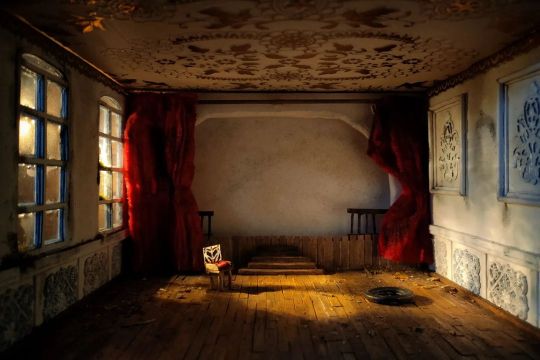
NEW VIDEO! It's over on the channel now! How to make an Abandoned Miniature Theatre. The sun is setting over the abandoned theatre, but why was it Abandoned? Was there a performance of Macbeth that went horribly wrong? Who knows, maybe time will tell! P.s. Don't forget to subscribe! . . . . . #urbex #urbanexploring #abandoned #abandonedtheatre #derelictplaces #derelictbuilding #abandonedminiatures #miniatureartist #miniart #modeling #model #scalemodels #dioramas #dioramacreators #dioramaartist #decay #theatre #exploring #explorepage #adventures #youtubers #youtube #miniatures #dollhouseminiatures #abandonedhorrors #strangeandunusual (at London, Unιted Kingdom) https://www.instagram.com/p/Cbvaxk2MKBL/?igshid=NGJjMDIxMWI=
#urbex#urbanexploring#abandoned#abandonedtheatre#derelictplaces#derelictbuilding#abandonedminiatures#miniatureartist#miniart#modeling#model#scalemodels#dioramas#dioramacreators#dioramaartist#decay#theatre#exploring#explorepage#adventures#youtubers#youtube#miniatures#dollhouseminiatures#abandonedhorrors#strangeandunusual
0 notes
Text
Things to Do in the Upper West Side
Things to Do in the Upper West Side http://avrahamglattman.org/things-to-do-in-the-upper-west-side/?utm_source=rss&utm_medium=rss&utm_campaign=things-to-do-in-the-upper-west-side Nestled between the picturesque Hudson River and the iconic Central Park lies the Upper West Side, a vibrant neighborhood brimming with culture, history, and endless possibilities. From world-class museums to charming cafes and scenic waterfronts, there’s no shortage of things to see and do in this dynamic area of Manhattan. Whether you’re a local resident or a visitor to the city, here’s a guide to some of the must-see attractions and experiences in the Upper West Side: 1. Stroll Along Riverside Park: Start your day with a leisurely stroll or bike ride along Riverside Park. This picturesque greenway runs parallel to the Hudson River. Enjoy stunning views of the river and the New Jersey skyline, explore landscaped gardens and waterfront promenades, or relax on one of the many benches and soak in the tranquil atmosphere. 2. Visit the American Museum of Natural History: Immerse yourself in the wonders of the natural world at the American Museum of Natural History. Home to an extensive collection of exhibits, including dinosaur fossils, meteorites, and dioramas showcasing diverse ecosystems, the museum offers something for visitors of all ages. Take advantage of the iconic Hayden Planetarium, where you can embark on a virtual journey through the cosmos. 3. Explore Central Park: A visit to the Upper West Side would only be complete with a visit to Central Park, the sprawling green oasis in the heart of Manhattan. Spend the day exploring the park’s winding pathways, lush meadows, and iconic landmarks, such as Bethesda Terrace, Bow Bridge, and Belvedere Castle. Rent a rowboat on the lake, have a picnic on the Great Lawn, or simply people-watch from one of the park’s many benches. 4. Catch a Show at Lincoln Center: Experience the best-performing arts at Lincoln Center, the world-renowned cultural complex on the Upper West Side. Attend a ballet performance at the Metropolitan Opera House, enjoy a concert at Avery Fisher Hall, or take in a Broadway show at the Vivian Beaumont Theater. With a diverse lineup of events and performances year-round, there’s always something exciting happening at Lincoln Center. 5. Indulge in Culinary Delights: The Upper West Side is home to a vibrant dining scene, offering diverse culinary options to suit every taste and budget. From upscale fine dining establishments to cozy neighborhood bistros and casual eateries, there’s no shortage of delicious food to sample. Be sure to try iconic New York dishes like bagels with lox, pizza, and deli sandwiches at local favorites like Zabar’s and Barney Greengrass. 6. Shop Along Columbus Avenue: Take a stroll down Columbus Avenue and explore its eclectic mix of boutiques, specialty shops, and charming cafes. Browse unique gifts, designer clothing, and artisanal goods, or stop by one of the many sidewalk cafes for a cup of coffee and some people-watching. Remember to check out the local farmers’ market for fresh produce, baked goods, and gourmet treats. 7. Attend a Live Performance: The Upper West Side is home to a thriving arts and culture scene, with numerous venues showcasing live music, theater, and comedy performances. Catch a jazz concert at Dizzy’s Club Coca-Cola, laugh the night away at Stand Up NY comedy club, or enjoy a live music performance at the Beacon Theatre. With so many options to choose from, you’re sure to find entertainment to suit your tastes. The Upper West Side offers many experiences and attractions for visitors to explore and enjoy. Whether you’re interested in culture, history, nature, or cuisine, there’s something for everyone to discover in this vibrant neighborhood of New York City. So pack your bags, lace up your walking shoes, and get ready to embark on an unforgettable adventure in the Upper West Side! The post Things to Do in the Upper West Side first appeared on Avraham Glattman | Fun in NYC.
0 notes
Text
Clown act about authoritarianism at the New Diorama Theatre
Clown act about authoritarianism at the New Diorama Theatre
Project Dictator at the New Diorama Theatre. A new comedy play about living under a dictatorship opens at the New Diorama Theatre on Tuesday 29 March. The story is about a clown double-act who were banned, separated and sent for “re-education”, but they return to play one last show. Project Dictator. Or: Why democracy is overrated and I don’t miss it at all is a darkly comic performance about…

View On WordPress
0 notes
Text
Flew The Coop.


My theatre review adapted from lucieloves.co.uk
It's a shame how some of the best love stories of all time go unnoticed or overlooked.
The tales of men and women risking their lives for their love going unnoticed and forgotten about. Well, last night I witnessed one of the best fringe theatre shows on the London scene that turned that notion on its head.
Flew The Coop is a love story based on true events set during the 1940s, I’ll be the first to admit that I’ve never heard of the plays two lead characters, Rosa Rauchbach and Horace Greasley – but within the space of an hour watching the story unfold I learnt so much about them and the events that took place during 1943 that I knew instantly I had to share this story with you.
I was invited to the Wednesday night showing as a guest by the The New Diorama Theatre. The theatre is in a great location, just a two minute walk from Warren Street and they are constantly showing Great productions by small theatre companies, the last show I saw was three years ago ... I need to get myself to the theatre more and as an ex drama student I am hanging my head in shame!
The show is inspired by the true story of Silesian translator Rosa Rauchbach who along with her parents had to hide her identity and take on a new one as German in order to save her own life. Horace Greasley, the British prisoner of war who escaped over 200 times to see her – romantic right!?! As their feelings developed and the war was coming to an end they had to decide on their future.
What I loved most about this show was the fast pace that it held as well as the comedic elements that were executed with precision. I didn't once lose concentration or my place within the story. The cast were well connected and the limited use of props was a genius idea - brooms that became guns. Tin cans that were speakers and headphones

I recommend this show to anyone in London looking for top quality at an affordable price; all I will say is, be quick, the show is selling out fast and ends its run on 4th March.

The show was created by by The Lost Watch Theatre Company and written by the leading actress, Rianna Dearden. The company formed in 2013, alongside Rianna there’s Olivia Hirst and Agnes Wild (both also on the show giving amazing performances!)
As a company, they have created three award-winning shows based on honest and gripping stories with no set rules of style or content. Flew The Coop is their fourth show. They often flit between London and Reykjavik, making the work that takes their fancy at the time.
Keep up to date on the company's latest news and shows via twitter by clicking this link: Lost Watch Theatre Company
Keep up to date with what's on at the theatre via twitter by clicking this link: New Diorama Theatre

#Theatre#London Theatre#LondonTheatre#Fringe Theatre#FringeTheatre#LondonFringeTheatre#New Diorama Theatre#NewDioramaTheatre#Theatre Review#TheatreReview#Blogger#Lifestyle Blogger#LifestyleBlogger#Lifestyle Blog#LifestyleBlog#Lost Watch Theatre Company#Visit London#VisitLondon#London#WorldWar2#World War 2#Love Story#LoveStory
1 note
·
View note
Text
Days Go By Set Design: The Journey So Far
Hey guys, Bez (the writer) here. Over the past couple of weeks, designer Liv and I have been working on our concept for the set of Days Go By. This will be the second iteration of our set concept since the first draft; since the demands of the production have changed with the script over the years, many things about the basic stage layout have had to change too. Today, I'm going to give you all a look at the evolution of the set design so far.
Model 1.0
Back in the days of 'Workin' Boys', we weren't even sure that the show would ever actually be put on a real-life stage, but we still wanted to design our set so that we could visualise the scenes as we wrote them. Our initial concept for the set needed to accommodate a variety of interior and exterior locations, so we went with relatively simple design that consisted of a city skyline backdrop, a staircase and an elevated platform with an upstage centre entrance as well as one at the top of the stairs and underneath.
The original design was sketched out and constructed into a physical diorama by artist Ofir:


As we developed the characters and story more, we began to develop further ideas for the set and how we could make it unique and visually compelling.
Model 1.1
Once we established that the musical would deal with themes of gentrification and corporate culture, we decided to incorporate an office building structure and apartment complex structure as part of the fixed set. Depending on the location, the action of a given scene would be localised near either the residential or commercial building, to set up this dichotomy of home versus workplace, family versus career etc. I dipped my toes into 3D graphic design to create this mockup of the new design:


We kept the stairs + platform at the back with the intention of using it as both a fire escape, a staircase and landing inside a house and a distant bridge in the city. The backdrop would have similarly been some sort of silhouetted city skyline to add to this urban setting.
After rebranding and doing a major overhaul of the story and characters, the set inevitably needed an upgrade. At this point in the process of writing the libretto + album, we felt ready to start drawing up concept art for the new set.
Model 2.0
Now we knew that our show would take place in the 80s and would be satirising aspects of American culture, I dove into researching 80s interior, graphic and textile design trends and their histories so we could design a most radical set for our musical. As we aren't sure of our venue at this stage, we also took into account the most likely measurements of an average theatre so that we could design a 3D scale model that would allow us to experiment with set pieces, lighting, projections and more.
As the latest iteration of the show contains a lot more symbolism and metaphor, we wanted to go with a somewhat abstract but recognisable design to allow for a variety of locations and moods. To indicate the general setting of California, we researched some artistic renderings of California city skylines reminiscent of the time period that we could draw upon in our final designs. On the upstage wall, there is a staircase with a door at the top that functions as an entrance/exit, with the other two entrances being via the wings. As most of our set pieces will be trucked or carried in, we calculated how much space we would be likely to have backstage to store set pieces and designed said pieces according to these measurements to ensure they would fit in the wings. This also allowed us to see how large certain set pieces would be in relation to a performer, so we could scale certain parts up or down as needed to achieve the intended effect.
For the time being, we have used placeholder blocks and images to give a general idea of what we intend for the set to look like when it is constructed. Here is a sneak peek at the latest stage design concept as well as a few different locations + potential lighting states for each, programmed by Liv using the open source tool Blender:





And that's where we are today! Inevitably, the design will get some tweaking once it gets to the final planning stages, but we thought you'd appreciate this sneak peek at the progress of the musical's design aspects at this stage in the development. Thanks again for all your support, Bez
#days go by#dgb#days go by: an 80s musical#days go by: an eighties musical#ingenue theatre#updates#set design
4 notes
·
View notes
Text

The Mosinee Project by Counterfactual comes to New Diorama Theatre in 2025 - #newdiorama @newdiorama #newdioramatheatre http://dlvr.it/TGrSVS
0 notes